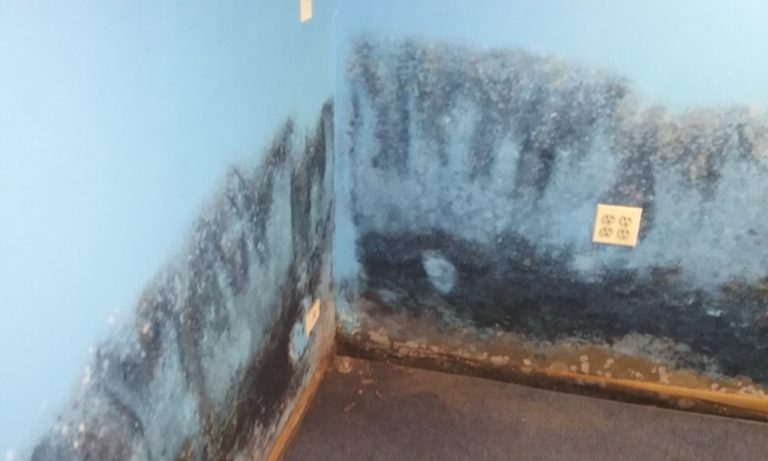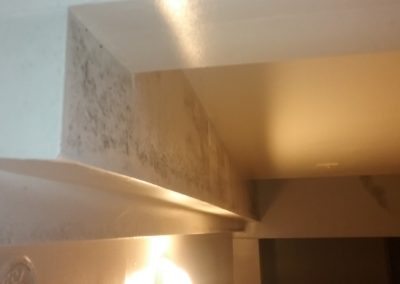
6 Ways To Prevent Mold After Water Damage
Water damage is a common problem in homes across the Midwest and it’s a bigger issue in the greater Chicago area. The greater Chicago area is a reason that gets a lot of water and extreme differences in temperatures.
Many homes in the Chicago area also have issues with sewage backup. The sewage issues are due to old public sewer systems and overcrowding. There are a lot of people using the Chicago area sewer systems. It also becomes a bigger issue during heavy rain storms.
If you have water damage due to a leak, flood, or sewage backup event, make sure you follow these steps to prevent mold growth. It is always frustrating to deal with water or sewage damage, but it is only gets worse when you have mold growth. Therefore, it is vital to prevent mold growth by properly cleaning, drying, and restoring any water and sewer damage.
As a homeowner, you want to make sure someone takes these steps to prevent mold growth after a flood, backup or leak. In this post, you will learn the 6 best ways to prevent mold growth following water damage issues in your home.

What is Mold and How Does it Grow?
Mold is a fungal growth that forms and spreads on various kinds of damp or decaying organic matter.
Most homes have plenty of organic materials like drywall, wood, and carpeting for mold growth to occur, if you have water or sewer damage. If you have organic materials and add water then you’re going to grow mold within 24-72 hours.
Learning how mold grows is the first step to learning how to prevent mold growth. It is important to know how mold grows so you know what to do to stop it from growing in your home. You do not want mold to start growing after water damage because it greatly impacts your quality of life.
Mold spores are very tiny. They’re so tiny that they can float through the air with the smallest of breezes. You shouldn’t even wave your hand around mold due to the way spores will spread. Mold spores can stick around a long time and you just need water to begin the growth. Mold also thrives with moisture, which is why it’s so common in bathrooms, windowsills, basements, and leaky roofs or pipes.
Mold can also grow due to the smallest amounts of condensation. Therefore, you want to make sure you do a great job of properly cleaning and drying any water damage you have. The chances of mold growing are pretty high after water damage so make sure you follow through on all steps of the restoration process.
Water Damage is an emergency
Water damage is an emergency due to the way it leads to mold growth. It is important to properly address any water damage or excess humidity in your home ASAP. You should always monitor the humidity in your home and keep it below 60%. Mold starts to grow at 60% humidity. There are times where weather leads to higher humidity in your home, but should rarely be above 60%. Get a dehumidifier for your home to help stay below the mold growth threshold.
You may not always see or be aware of mold growing in your home. Some symptoms adults and children may display around mold are:
- Sneezing
- Coughing
- Itching
- Runny nose
- Dry skin
- Sore throat
- Eye irritation
- Headaches

6 Steps to Prevent Mold After Water Damage
1. Water Removal
After cleaning up the mess, you want to focus on water removal, which also includes humidity. You need to assess the water damage and begin to dry out or remove anything that is holding water. Act quickly so you can help prevent mold from growing. Time is an active ingredient to mold growth.
If you have standing water, you can use a the old bucket method or you can get a wet-dry vacuum. These newer vacuums can typically pump out anywhere from 5-10 gallons a minute. You can also purchase them just about anywhere. Renting them at a local hardware store can also be an option.
2. Remove Wet Organic Material
When dealing with a category 1 water damage event, you can typically dry everything. However, you need to remove wet organic material when it comes to category 2 and category 3 water damage. Removing carpet, padding, and anything laminate or floating floors will help prevent mold from growing or spreading. Do not try to save carpet padding or carpet during category 2 or category 3 water damage events. You also want to get rid of any drywall that was hit by category 2 or category 3 water.
Wet carpet and carpet padding are a great beeding ground for mold due to the original marterial and the dust, dirt, dander, mold, and other things already lying on the carpet.
You can save some carpet and padding after water damage depending on type of water, response time, and drying methods/conditions.
3. Use towels or rags to dry counters and furniture
It is OK to use all the towels and rags you need to dry out any water that you can in your home. Towels and rags are a great way to deal with moisture. Wiping the small puds and drying what you can manually will also help you assess the major water damage. It also a good idea to get in the habit of wiping down your windowsills, bathroom floors, windows, and other areas that collect moisture down with a towel every few days. You don’t want any areas of your home staying consistently wet.
4. Use a dehumidifier to reduce moisture
Every home has a little bit of mold, but homes with higher relative humidity and consistent wet areas tend to have much more. Mold does thrive in warm and wet environments. That is why it is so important to wipe things down and keep your home at a lower humidity level. Relative humidity is the amount of water vapor in the air, and you want to stay below 60% to prevent mold growth. If you have water damage such as flooding in your basement or home, you probably want to rent professional drying equipment.
Every job requires the right tool. If you have major water damage in your home, then you probably want to get an LGR dehumidifier and some large air movers for a few days. It typically takes 3 days of warm air flow to dry a home out completely. You want also to have a regular home dehumidifier set to run when the humidity gets too high.
A dehumidifier works by drawing in warm wet air, cooling it into ice, melting it, and draining it out to somewhere else. The LGR dehumidifiers are able to take out a lot more vapor out of the air. They also produce a lot more heat which really helps with drying process.
5. Apply anti-microbials
After you are able to properly dry everything, go ahead and apply an anti-microbial agent. Applying disinfectants can also help reduce bacteria and mold growth. Disinfecting any surfaces that you can will help eliminate bacteria and prevent further mold growth or damage. A “biocide” is a substance that destroys living organisms so always use any “disinfectant” according to the instructions on the bottle. Make sure to also read the warning labels before you use any biocide.
In most cases, consumer-grade disinfectant is sufficient to eliminate bacteria from the area. Dish soap can be a great way to clean up sewage.
6. Repair or replace damage items and materials
In some cases, you can repair items that suffer water damage. There are also many cases where you should replace things that suffer water damage. No matter what, you want to make sure that you probably document your losses from the beginning off the water damage event to the end of the restoration process. It is even more important to document everything when you’re dealing insurance claims.
If you see any visual water damage in things like drywall, vanities, or cabinets, you should replace them. Get rid of anything that is changing colors. In cases of mold, you probably want to hire an expert. You can also get a mold test if you’re not sure you have mold.
If notice a musty or murky odor then you want to remove the source. If you notice warping in your flooring, cabinets, or walls, you probably want to remove them. Do not mess around when it comes to noticing mold growth. Clean it up immediately.
It is always frustrating and daunting to deal with mold in your home, but it also always important too. If you properly dry properties that have water damage, you typically have to replace less materials. You will save yourself a lot of money and grief if you dry out the property right the first time. Do not let mold grow in your home.
What do I do if I find mold damage?
Sadly, mold is also a common issue in many homes across the midwest. It’s a common issue because mold thrives in moist environments. If you notice signs of potential mold growth, get a mold test. A mold testing company will be able to identify any types of mold you may have in your home. The mold testing company will also provide a protocol for you or a mold remediation company to follow during the mold removal process.
You want to have separate companies do the mold testing and mold remediation work to avoid any conflict of interest. After you have the mold remediation work done, get another mold test to ensure the home is back to livable conditions.
